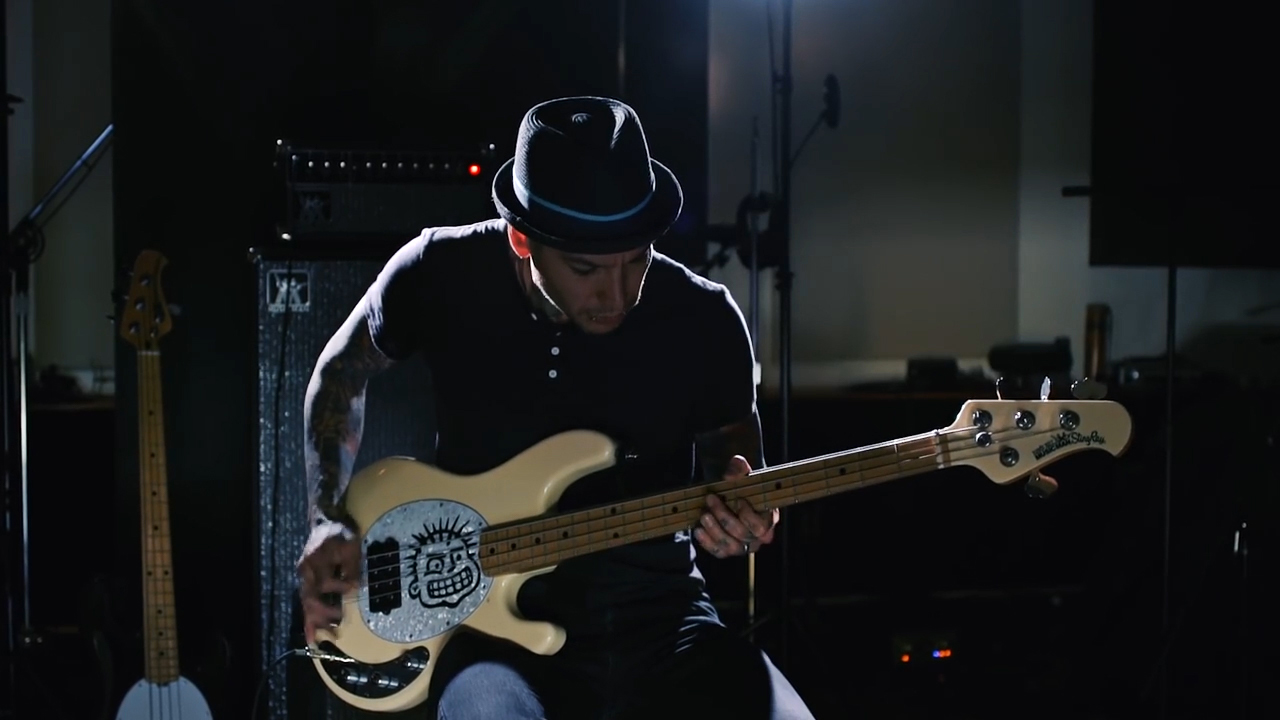Herrera sat down with us for an episode of Ernie Ball: String Theory. Here are the top six things we learned during the episode, along with a timestamp for each segment so you can follow along.
#1 – Herrera’s first introduction to punk rock was through a childhood friend. (0:38)
#2 – Sting is a big influence for him. (1:32)
“I was listening to The Police. Sting, I thought that was really interesting how he sang and played, and they could make all this noise as a three-piece. And that sort of made me go, bass guitar – that’s my instrument.”
#3 – He bought his first bass on layaway. (1:54)
#4 – His favorite part of recording is playing bass. (2:17)
#5 – When writing songs, he typically writes chord structures and vocal melodies first. (2:56)
Herrera’s approach to bass lines is reminiscent of how many players look at the guitar. He can use it to add depth, texture, harmonies, etc. “And then sometimes you just hit the root note and call it a day!”
#6 – He gets to play a lot more than punk songs thanks to his studio. (3:34)
“It’s cool because I’m not just doing my own stuff. Artists come in, and they’re making a record or an EP or a couple songs, and a lot of times I get the chance to sit in and play bass for them. So it really gets me out there not just doing straight punk stuff, not just doing rock. I do folk and country, it’s the best.”
String Theory
Watch every episode of Ernie Ball: String Theory at our website, featuring such players as Don Felder, Steve Vai, Kirk Hammett and more. You can also enjoy some of the most popular MxPx songs in this Spotify playlist.
Guitar Strings and Basses
Mike Herrera plays Ernie Ball Music Man StingRay basses and Ernie Ball Regular Slinky bass strings. Do you? Try a set.


